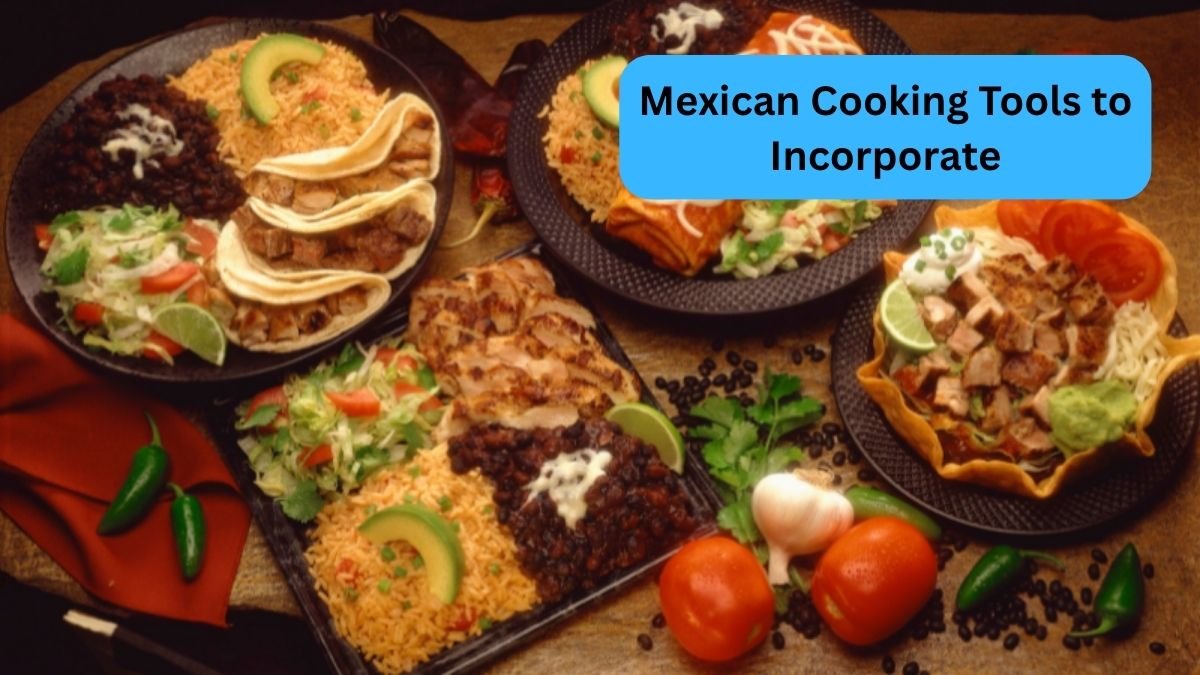When I first moved into my own kitchen, my abuelita (grandmother) gifted me a traditional cast‑iron comal. It’s a flat griddle she used for decades and she said it was her most essential tool. Over time, I’ve added more Mexican‑style kitchen tools. Each one has become part of my everyday cooking—from salsa to tacos to family dinners. Here are six tools that I think everyone should try using, along with ideas on how you can use them beyond just making Mexican food. These tools help you cook smarter, faster, and with more flavor.
1. Comal
A comal is a flat griddle—usually round—with a slightly raised edge. Traditional comales are made from cast iron or clay and need regular care, just like a beloved cast iron skillet. There are modern versions too, made of nonstick steel for easy cleaning. My grandmother’s gift was a cast iron comal, but I also keep a nonstick one on hand when I want less maintenance.
What I use it for:
- Warming tortillas, crisping up quesadillas
- Dry‑roasting tomatoes, chilies, spices, and garlic for gourmet salsas
- Making gorditas, sopes, and even pancakes or grilled cheese with light oil
- Quick meat searing: carne asada is especially simple on a comal
Fun idea: Make breakfast tacos on a Sunday morning. I toast fresh tortillas, scramble eggs with spicy chorizo, and let everyone build their own. Dinner‑leftover quesadillas get a second life too!
2. Molcajete (Volcanic Stone Mortar & Pestle)
A molcajete is a rough three‑legged bowl made of volcanic rock, paired with a grinding stick called a tejolote. It’s used to make things like guacamole, salsas, or spice pastes thicker and more flavorful.
Why it’s different: The rough stone surface grinds ingredients slowly and mixes flavors better than a blender. But make sure it’s real stone—avoid cement or resin, which can shed bits into your food.
How I use mine:
- Smash garlic, chilé seeds, onions, and tomatoes into salsa
- Make guacamole fresh, keeping it chunky and textured
- Crush mint leaves, sugar, and lime in a mojito or berry smash cocktail
- Grind spices, seeds, or tea leaves before storing
Extra tip: Older molcajetes get better with use—they get seasoned over time.
3. Tortilla Press (Tortilladora)
A tortilla press, or tortilladora, helps you press dough balls into perfect corn tortillas. I have a sturdy cast‑iron version that’s over 13 years old and still going strong.
What you need: Masa harina, water, salt, and a plastic bag or sheet to keep dough from sticking. Place the ball in between the plates and press down. You get thin, even tortillas every time.
More uses:
- Make empanadas, mini pies, dumpling wrappers, or flatbreads
- Shape salad‑friendly flattened meat patties or fish cakes
- Easily crush almonds or walnuts to the same shape for crafts like burgers or salad toppings
4. Wooden Spoons and Spatulas
Many traditional Mexican recipes call for wooden utensils and for good reasons. They’re sturdy, don’t scratch cookware, and won’t melt near high heat.
Why I like them:
- They stir mole, simmer beans, or sauté onions without damaging pans
- Each one absorbs flavor over time—which might sound strange but actually gives character
- I stock up when I visit Mexico—many mercados sell beautiful spoons cheaply, often under a dollar
Bonus use: Old ones make charming plant markers or crafting tools!
5. Tamale Steamer Stockpot (Vaporera)
For tamales, fiestas, or large family meals, a tamale steamer pot is essential. It’s a big stockpot with an insert rack and a lid, perfect for steaming dozens of tamales at once.
Uses beyond tamales:
- Steam vegetables, seafood, or dumplings
- Cook soups, stews, and chilis (without burning them—you can rinse the pot easily)
- Turn it into a double boiler by placing a bowl inside
This has become my go‑to for large batch cooking or weekend meal prep.
6. Traditional Clay Pot with Lid (Cazuela or Olla de Barro)
A cazuela de barro or clay pot turns anything you cook into something magical. Clay distributes heat evenly and cooks slowly, infusing food with a subtle earthy flavor.
What it’s best for:
- Braising meats like pork or chicken
- Making beans or rice dishes like arroz rojo
- Cooking stews, guisados, or even baking bread or desserts
What to watch for: Buy from trusted sellers to ensure your pot is lead‑free. Also, let it cool before washing to prevent cracks.
My cazuela adds richness to mole, sweetness to slow‑cooked onions, and depth to pot‑roasted meat. Dishes taste more authentic and complex in clay.
Why These Tools Matter
Each tool brings out deeper flavor and textures that modern cookware can’t replicate. They’ve helped me make restaurant‑quality salsas, perfect tortillas, and soulful stews at home. More importantly, they connect me to my heritage—and my grandmother’s kitchen.
You’ll also discover new uses:
- Crushing spices for salad dressings
- Making infused oils or herb pastes
- Sharing recipes with friends—guacamole made in a molcajete is always a hit!
Quick Review Table
| Tool | Traditional Use | Everyday Adaptation |
|---|---|---|
| Comal | Tortillas, roasting, quesadillas | Pancakes, searing meat, frying flatbreads |
| Molcajete | Salsas, guacamole, spice grinding | Hummus, cocktail mixers, tea crushing |
| Tortilla Press | Corn tortilla making | Dough pressing, salads, patty forming |
| Wooden Utensils | Cooking moles, sautéing | Stirring soups, no-scratch stirring |
| Tamale Steamer Pot | Large batch steaming (tamales) | Steaming veggies, seafood, boiling soups |
| Clay Pot (Cazuela/Olla) | Long-simmered stews, moles, beans | Baking, casseroles, slow cooking meats |
Final Thoughts
If you want to bring more flavor and tradition into your kitchen, these six tools are worth trying. They give you an authentic experience, help you cook more deeply flavoured meals, and make every dish feel special. They also remind me of family meals, laughter, and traditions passed down—food tastes better when it comes from the heart.
